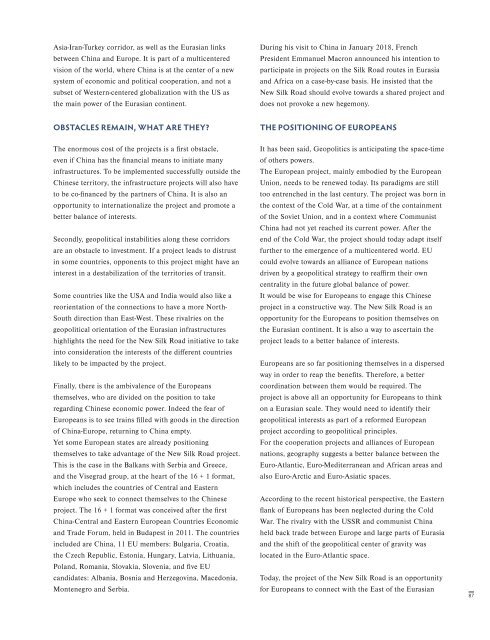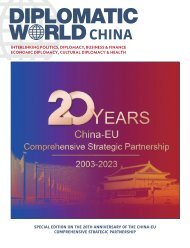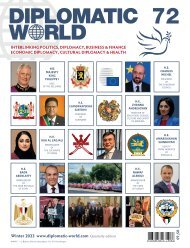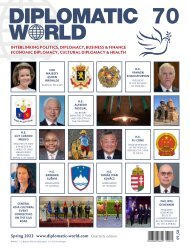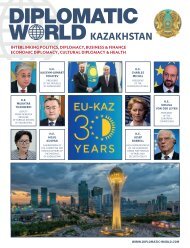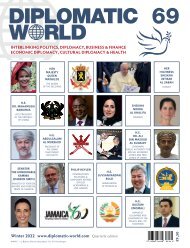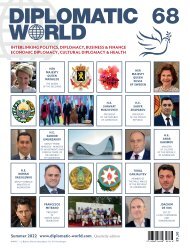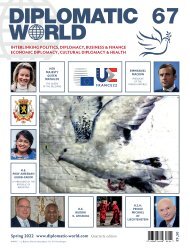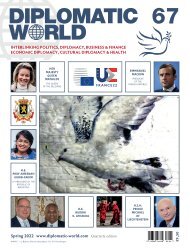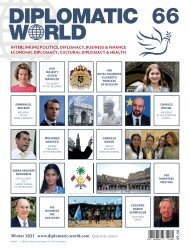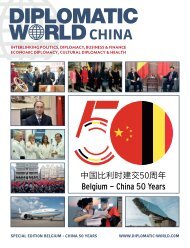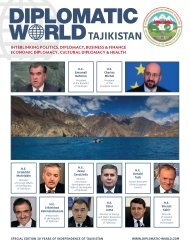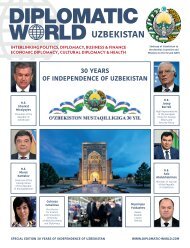You also want an ePaper? Increase the reach of your titles
YUMPU automatically turns print PDFs into web optimized ePapers that Google loves.
Asia-Iran-Turkey corridor, as well as the Eurasian links<br />
between China and Europe. It is part of a multicentered<br />
vision of the world, where China is at the center of a new<br />
system of economic and political cooperation, and not a<br />
subset of Western-centered globalization with the US as<br />
the main power of the Eurasian continent.<br />
During his visit to China in January 2018, French<br />
President Emmanuel Macron announced his intention to<br />
participate in projects on the Silk Road routes in Eurasia<br />
and Africa on a case-by-case basis. He insisted that the<br />
New Silk Road should evolve towards a shared project and<br />
does not provoke a new hegemony.<br />
OBSTACLES REMAIN, WHAT ARE THEY?<br />
THE POSITIONING OF EUROPEANS<br />
The enormous cost of the projects is a first obstacle,<br />
even if China has the financial means to initiate many<br />
infrastructures. To be implemented successfully outside the<br />
Chinese territory, the infrastructure projects will also have<br />
to be co-financed by the partners of China. It is also an<br />
opportunity to internationalize the project and promote a<br />
better balance of interests.<br />
Secondly, geopolitical instabilities along these corridors<br />
are an obstacle to investment. If a project leads to distrust<br />
in some countries, opponents to this project might have an<br />
interest in a destabilization of the territories of transit.<br />
Some countries like the USA and India would also like a<br />
reorientation of the connections to have a more North-<br />
South direction than East-West. These rivalries on the<br />
geopolitical orientation of the Eurasian infrastructures<br />
highlights the need for the New Silk Road initiative to take<br />
into consideration the interests of the different countries<br />
likely to be impacted by the project.<br />
Finally, there is the ambivalence of the Europeans<br />
themselves, who are divided on the position to take<br />
regarding Chinese economic power. Indeed the fear of<br />
Europeans is to see trains filled with goods in the direction<br />
of China-Europe, returning to China empty.<br />
Yet some European states are already positioning<br />
themselves to take advantage of the New Silk Road project.<br />
This is the case in the Balkans with Serbia and Greece,<br />
and the Visegrad group, at the heart of the 16 + 1 format,<br />
which includes the countries of Central and Eastern<br />
Europe who seek to connect themselves to the Chinese<br />
project. The 16 + 1 format was conceived after the first<br />
China-Central and Eastern European Countries Economic<br />
and Trade Forum, held in Budapest in 2011. The countries<br />
included are China, 11 EU members: Bulgaria, Croatia,<br />
the Czech Republic, Estonia, Hungary, Latvia, Lithuania,<br />
Poland, Romania, Slovakia, Slovenia, and five EU<br />
candidates: Albania, Bosnia and Herzegovina, Macedonia,<br />
Montenegro and Serbia.<br />
It has been said, Geopolitics is anticipating the space-time<br />
of others powers.<br />
The European project, mainly embodied by the European<br />
Union, needs to be renewed today. Its paradigms are still<br />
too entrenched in the last century. The project was born in<br />
the context of the Cold War, at a time of the containment<br />
of the Soviet Union, and in a context where Communist<br />
China had not yet reached its current power. After the<br />
end of the Cold War, the project should today adapt itself<br />
further to the emergence of a multicentered world. EU<br />
could evolve towards an alliance of European nations<br />
driven by a geopolitical strategy to reaffirm their own<br />
centrality in the future global balance of power.<br />
It would be wise for Europeans to engage this Chinese<br />
project in a constructive way. The New Silk Road is an<br />
opportunity for the Europeans to position themselves on<br />
the Eurasian continent. It is also a way to ascertain the<br />
project leads to a better balance of interests.<br />
Europeans are so far positioning themselves in a dispersed<br />
way in order to reap the benefits. Therefore, a better<br />
coordination between them would be required. The<br />
project is above all an opportunity for Europeans to think<br />
on a Eurasian scale. They would need to identify their<br />
geopolitical interests as part of a reformed European<br />
project according to geopolitical principles.<br />
For the cooperation projects and alliances of European<br />
nations, geography suggests a better balance between the<br />
Euro-Atlantic, Euro-Mediterranean and African areas and<br />
also Euro-Arctic and Euro-Asiatic spaces.<br />
According to the recent historical perspective, the Eastern<br />
flank of Europeans has been neglected during the Cold<br />
War. The rivalry with the USSR and communist China<br />
held back trade between Europe and large parts of Eurasia<br />
and the shift of the geopolitical center of gravity was<br />
located in the Euro-Atlantic space.<br />
Today, the project of the New Silk Road is an opportunity<br />
for Europeans to connect with the East of the Eurasian<br />
87


